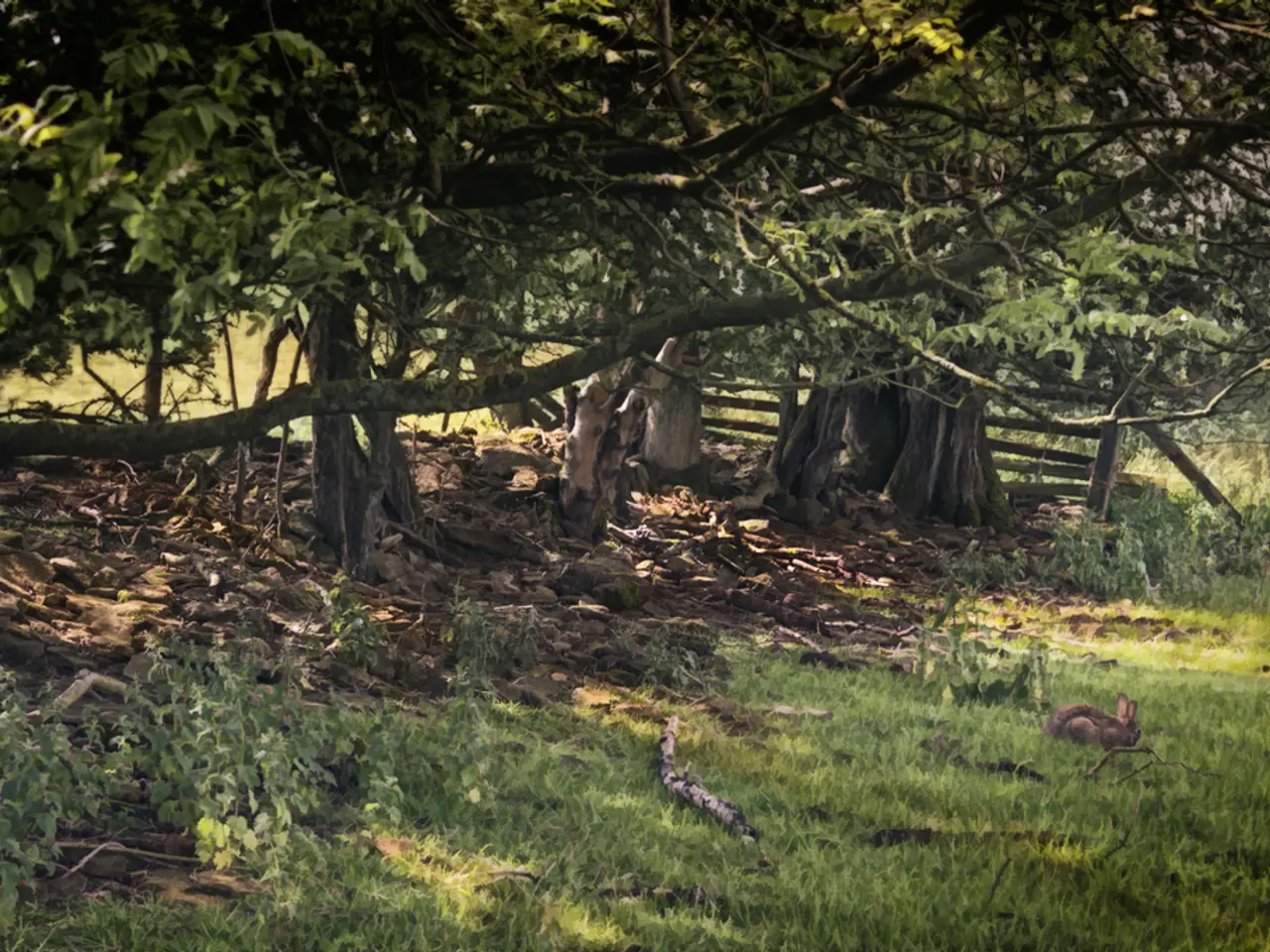Transform your yard into an edible, eco-friendly biodiverse haven: A food forest that benefits you and the environment for optimal health and planet preservation.
In the quest for a more sustainable and self-sufficient food source, the concept of a food forest has gained popularity. This innovative gardening approach mirrors the natural ecosystem, creating an ecology of food and support plants that form a harmonious and productive garden.
The food forest is designed with multiple layers, each serving a specific purpose. Let's explore some of the best plant choices for each layer:
**Canopy Layer**
Tall fruit and nut trees, such as apple, walnut, avocado, and pecan, form the canopy. They provide shade and structure to the garden, supporting the growth of other layers.
**Understory Layer**
Dwarf or semi-dwarf trees, like dwarf citrus trees, dwarf apples, and peaches, offer fruit and create a more complex structure for the garden. Shrubs, such as currants, berries, coffee bush, and pomegranate, provide additional fruit and support biodiversity.
**Herbaceous Layer**
Perennial herbs and vegetables, such as comfrey, lemongrass, and perennial vegetables like rhubarb, enrich the soil and offer a variety of flavors for cooking.
**Groundcover Layer**
Edible groundcovers, like strawberries, sweet potato vines, creeping thyme, and clover, help control weeds and retain moisture in the soil.
**Root Layer**
Tuberous plants, such as ginger, turmeric, Jerusalem artichokes, and beets, utilize the soil's resources without competing heavily with other plants.
**Climber Layer**
Vine crops, including beans, peas, passionfruit, and grapes, utilize the structure of the canopy and understory layers, maximizing space and productivity.
Additional considerations for creating a food forest include soil suitability, diversity, and resilience. Ensuring that the plants chosen are well-suited to your specific soil type and local microclimate is crucial. Incorporating a variety of plants enhances biodiversity and resilience within the garden.
Alpine strawberry seeds, for instance, can cover 80 square feet of area. Root plants, like carrots, turnips, potatoes, sunchoke, beets, onions, dandelion, burdock, and chicory, loosen the soil, increase percolation, enhance germination, and add deep flavor and color to recipes.
Over time, as the plants mature, the entire ecosystem becomes a nearly self-sustaining food garden. Minimal herbicide and pesticide are necessary when properly set up. A food forest is not only a garden but also a haven for wildlife, sequestering carbon, enhancing biodiversity, soil health, and helping manage water usage.
Moreover, medicinal and culinary herbs are incorporated in food forests, such as borage, dill, oregano, thyme, lavender, pansies, daylilies, chamomile, and alpine strawberry. The approach is holistic, aiming to replicate the natural actions of Mother Nature.
In essence, a food forest is a garden that offers a bounty of edible plants, while also providing a balance of ecosystem services, making it an attractive and sustainable solution for self-sufficient food production.
The food forest, designed with a balance of ecosystem services, offers an opportunity for sustainable living, providing a variety of edible plants such as apples, walnuts, and avocados in the canopy layer, dwarf citrus trees in the understory layer, perennial herbs like comfrey and lemongrass in the herbaceous layer, and edible groundcovers like strawberries in the groundcover layer. Furthermore, a food forest incorporates medicinal and culinary herbs like borage, dill, and lavender, making it a haven for wildlife while also contributing to soil health and carbon sequestration, thus promoting a lifestyle that harmonizes with nature.



